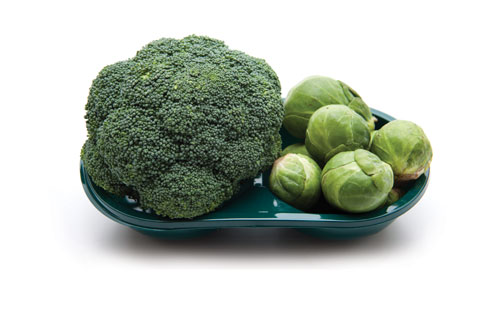
Bulletin E3172
Michigan Fresh: Fall Vegetable Crops for your Garden
DOWNLOAD
January 23, 2015 - Gretchen Voyle
Fall Vegetable Crops for your Garden
Planting a vegetable garden does not have to be a springtime activity only. Many of our favorite vegetables can be put in, either as seeds or transplants, in the late summer or early fall for fresh produce to harvest in September and October.
Many of these vegetables do better in cool weather. Some are actually tastier when they have been lightly frosted. If these vegetables were planted in May for harvest in July, they could be tough and woody, taste bitter or bolt. (Bolting is when the plant is stressed by the hot weather and produces flowers and seeds.) Vegetables noted for bolting are broccoli, cabbage, lettuce, spinach and radishes.
Consider getting more from your garden by bringing in that second team to extend your harvest season. See the table below for some vegetables to plant in late summer.
Be sure to use frost protection overnight if an early frost is expected or the crop has not matured yet. Cover plants in the early evening with sheets, row covers, newspaper, cardboard or old blankets. Do not use plastic -- it transfers the cold through to the plants, moisture condenses on the underside, and plants can freeze beneath the plastic. Use supports to keep the covering material from direct contact with the plants.
When to plant depends on when the first frost generally occurs. For many parts of Michigan, it is in late September or early October. Start with that date and count backward. You must consider how many days it takes for your particular vegetable to mature. If the weather is warm in late summer and fall, the number of days will be fewer; if it is a cool growing period, it may take longer for crops to reach the harvest stage.
The days to harvest are estimates. They are based not on when the seeds were planted but when the seeds have germinated and the small plants are growing. Most of these vegetables will be planted at the end of July or early August.
Veggie tips:
- Collards can also handle hot weather and could be both a spring and fall crop.
- Kale and collards have improved flavor after a light frost.
- Kale, collards, mustard and chard are cooked before using and are called “cooking greens.”
- Spinach can be eaten raw or cooked.
- A large radish variety called Daikon or Oriental radish has a mild radish taste and can be eaten raw or boiled, steamed, braised, fried or pickled. Daikon takes 60 days until harvest.
- Swiss chard with red stems or stems of many colors (‘City Lights’) is preferable to the white-stemmed varieties because any small blemish on the white stem will show as brown but not be noticed on the colored stems.
- Even after a hard frost, root crops have an advantage that those vegetables aboveground do not -- carrot, beet, turnip, radish, parsnips and rutabaga will be protected by the soil and can be dug and used anytime before the ground freezes. Mulch over the tops of the plants with straw to protect the roots from freezing.
- Even though it is a warm-season vegetable, green bush beans can be planted as a second crop in mid-July. They take approximately 60 days until harvest.
- Tomato is another warm-season vegetable. Though tomatoes are planted only in late spring, you can harvest green tomatoes right before a frost and use them fried or in some salsas. Many do not ripen adequately indoors.
| Vegetable | Days to harvest | Vegetable | Days to harvest |
| Beets | 60 | Kohlrabi | 60 |
| Broccoli | 60 | Leaf lettuce | 50 |
| Brussels Sprouts | 100 | Mustard greens | 60 |
| Cabbage (head) | 80 | Peas (sugar) | 60 |
| Cabbage (Chinese) | 80 | Radish | 30 |
| Carrots | 60 | Rutabaga | 80 |
| Cauliflower | 65 | Spinach | 60 |
| Collards | 100 | Swiss chard | 60 |
| Kale | 60 | Turnips | 60 |
More information
Prepared by: Gretchen Voyle, MSU Extension educator



 Print
Print Email
Email

